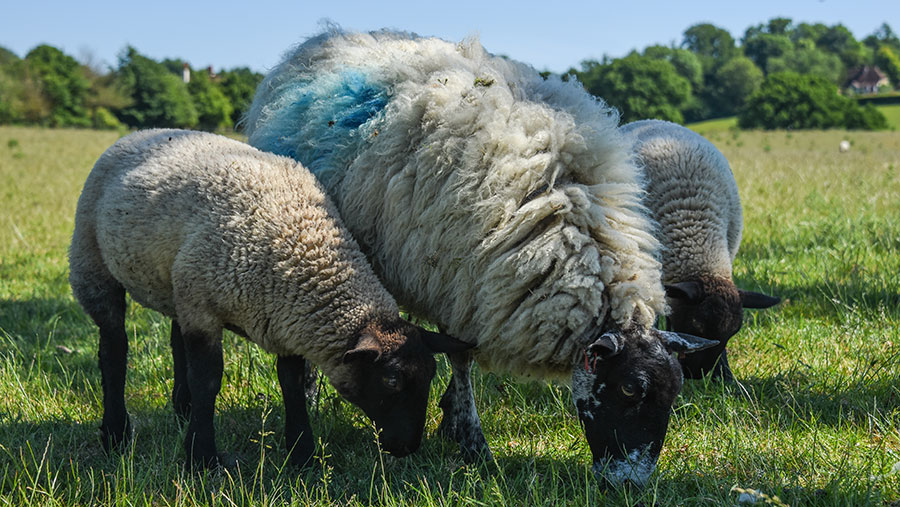Why farmers should tackle sheep lameness before summer spike

Sheep producers should introduce extra management measures to tackle lameness in flocks ahead of a seasonal summer spike, warn vets.
Vet Joe Angell from Wern Vets in north Wales explains that many flocks suffer an increase in lameness as the summer progressed.
See also: How to correctly diagnose and treat the main causes of sheep lameness
The situation can be so marked that Dr Angell advises farmers to implement prevention measures in the run-up to weaning.
“It’s the ideal time to try to put a lid on any problems before disease becomes more established,” Dr Angell says.
“For example, weaning time is a good opportunity to earmark any persistently lame ewes for culling.
“And if you rear your own flock replacements, make sure you only breed from sound ewes or ewe lambs that have not been lame,” he adds.
Any affected animals should always be treated quickly and a vaccination programme after shearing could help prevent foot-rot cases.
Foot-rot is the most common cause of infectious lameness, but is also a risk factor for other foot disease issues, such as contagious ovine digital dermatitis (Codd), Dr Angell points out.
These are the two most important causes of lameness in UK sheep and are strongly associated in their infection and transmission routes, despite having different causal pathogens.
Dr Angell says it is important to focus on the whole spectrum of disease issues, rather than any one problem in particular, and he advocates the industry five-point plan to tackle lameness
Five-point plan
- Quarantine incoming animals
- Vaccinate
- Avoid spread at gathering and handling
- Treat clinical cases early
- Cull badly or repeatedly infected animals
The five-point plan provides a useful framework for devising a holistic lameness control plan and will help to keep flock lameness incidence down to 2%, he suggests.
As well as implementing the plan, Dr Angell urges flock keepers to consider buying only from a single farm with a known disease history, then impose a four-week quarantine on new animals.
“In addition, you should also turn any new sheep over on arrival and examine their feet for signs of disease; there may be no evidence of limping, but you may still be able to see early Codd lesions,” he warns.
